Rachael and I are now half way through documenting the collection of baskets here at the museum. There are just over 100 baskets housed in the store, and as part of this project we’re going through each and every one of them.
What are we actually doing with them, I hear you ask?
Firstly, I check the object number (it doesn’t always match the record…then there’s a bit of investigation required to get to the bottom of the numbering issue. It’s a common museum problem!).
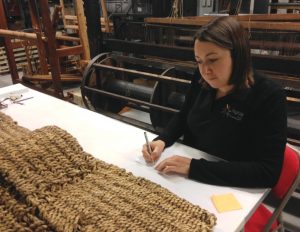
There was a bit of a puzzle over the object number for this pack saddle pad, some detective work was required
Once we’re sure of the number and object name, I give it a new acid free, conservation grade label, making sure to keep hold of any original labels that are valuable documentation in their own right and add to the history of that object.
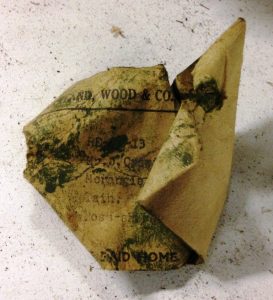
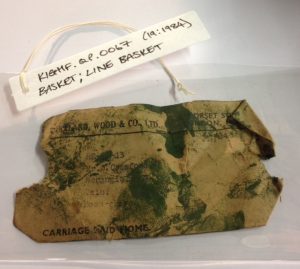
An old packing label found at the bottom of a basket, now placed in a conservation grade wallet and kept with the new object label
I document the object by writing a physical description, taking measurements, recording all the materials that it’s made of, photographing the object and making a note of any other important details such as information written on existing labels.
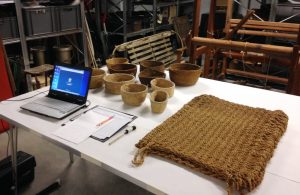
The set up in the store for carrying out the documentation
Rachael carries out a condition check of the object to identify any potential problems with its structure and to check for any active pests, she also cleans each one with a brush, gently hoovering up any loose dirt and dust. Some of the objects need additional conservation work, such as a bit of structural support or heavier duty cleaning, in which case they’ll be taken down to the conservation lab to receive some one-to-one care.
We’ll soon be making custom sized boxes or trays for the objects that need it, to take the strain off them when handling and moving them to and from their permanent locations in the store. Some of the baskets are quite fragile things, so giving them their own trays will reduce the handling of the actual object, and extend their lifespan for many more years to come.
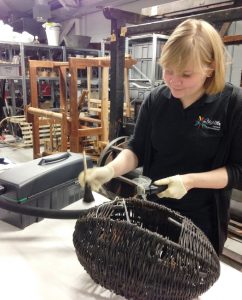
Rachael cleaning a wool basket, or mudag, in the store
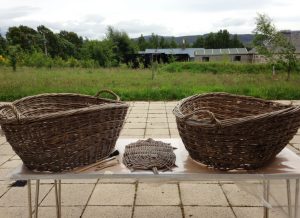
Cleaning with a view. On a fine day we take the opportunity to clean larger objects outside in the fresh air.
Once I’ve recorded all the information that I can from the objects themselves, I input this information onto the collections database. I add all the other existing information from the written records and catalogues that relate to that object, e.g. acquisition details. At the moment the computer database is quite scant of information (again, another common museum problem), so everything that I put up there is an improvement as to how it was, which is encouraging! Having object information on a searchable database makes the collection so much more accessible and useful – it’s a case of pulling together all the info that exists about that object, and adding it to the record.
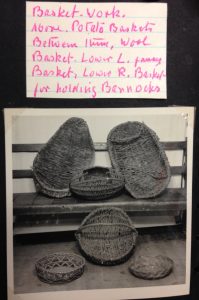
Archive material can help to resolve documentation queries, such as object names. This photo and label, from an I.F. Grant photo album (1940s), shows a selection of baskets from when the museum was based in Kingussie and confirms what the baskets were originally known as (so long as you can decipher the handwriting). Image copyright: Highland Folk Museum.
At the moment, the collections database is only searchable by museum staff, but the work that we’re doing now is all heading towards the ultimate goal of getting the collection online so that what we have here in Newtonmore can be shared with audiences all over the world, for research and for enjoyment. The Scottish Highlands aren’t the easiest place to get to and the store is only available to visit by appointment or guided tour, so anything we can do to open up these wonderful collections to audiences both near and far is hugely worthwhile, and we hope you’ll agree!
Helen Pickles
Click here for previous blog post #1

